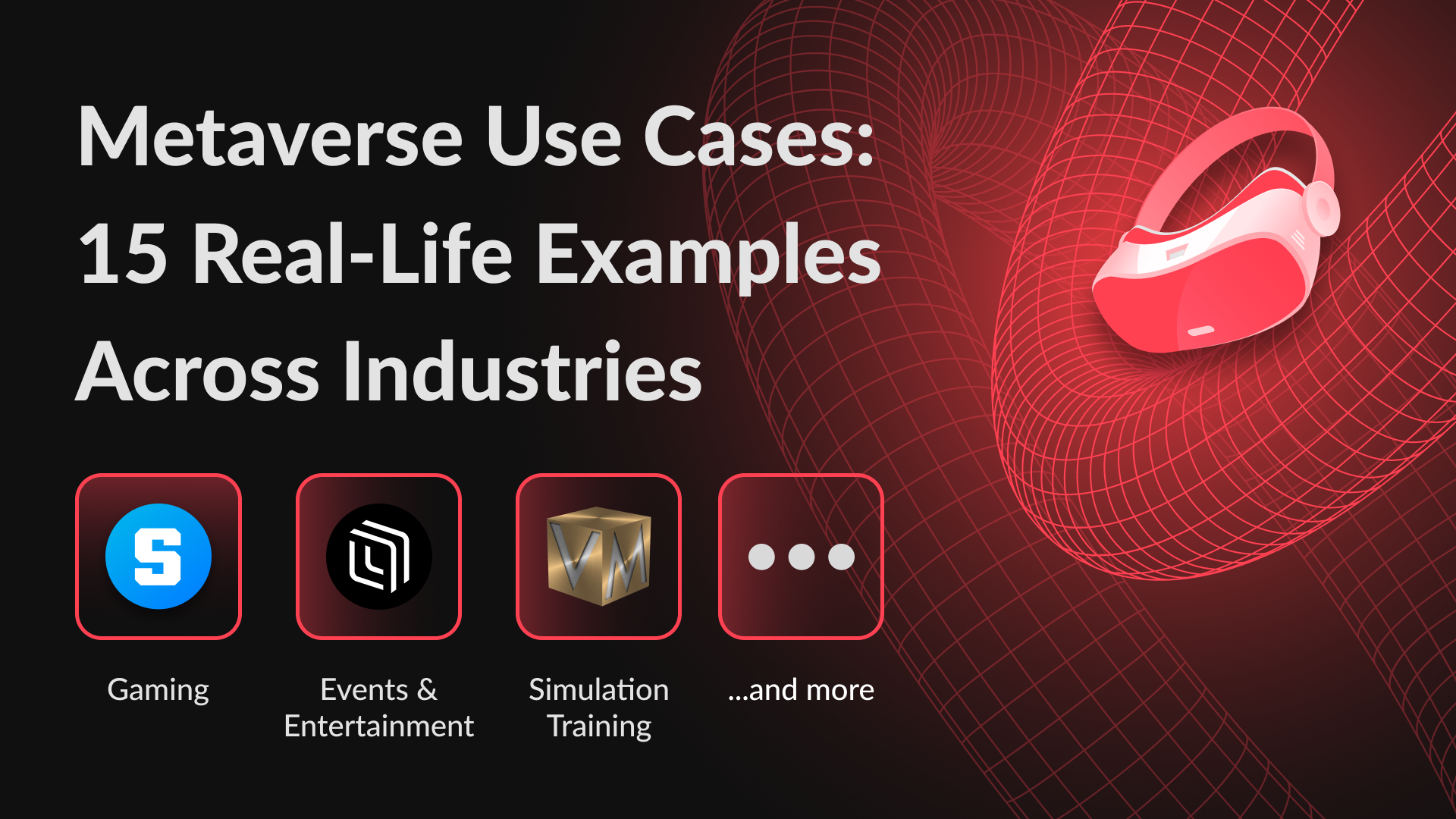The metaverse hype is over, but the industry is not standing still. Dozens of metaverse startups like Futureverse raised millions of dollars when the metaverse was no longer making waves. While Zuckerberg’s corporate metaverse turned out to be a disaster and a source of countless memes, other companies found more reasonable niches with a real interest in this innovative technology.
To back our claims that the metaverse is very much alive, we curated an extensive list of metaverse examples in real life. We combined our expertise as a metaverse development company with profound market research to show you a broad spectrum of metaverse applications across industries.
In this article, we’ll explain the metaverse in simple terms, describe how big names are experimenting with it, and what services are emerging around it. Let’s go!
What is metaverse?
The metaverse is a concept of a 3D virtual world that allows people to self-express themselves, explore, and co-create this space full of different real-life and truly digital experiences like shopping, learning, playing video games, socializing, collaborating, watching streamed content, and earning.
The metaverse is still taking shape, so it’s difficult to define it clearly. Ideally, it has to be an interoperable network of different 3D worlds where thousands of people can interact simultaneously.
“We see the metaverse as this myriad of virtual worlds that anyone can access through an avatar — that’s digital identities or 3D characters — that becomes our representation of ourselves into those virtual worlds that are more social, more immersive and more creative thanks to technology,”
What we have now looks more like early metaverse prototypes existing separately. For example, we have Decentraland, Axie Infinity, The Sandbox, and Fortnite Creative. All these are different metaverse games that are not connected.
However, Decentarland has already made the first steps towards interoperability, allowing its players to add external NFT collections as linked wearables. Being an NFT owner is way more exciting when you can actually wear it and show it off right in the game.
Another distinctive feature of the metaverse is that it is always on. No matter when you join the virtual world, multiple things are happening there concurrently.
“One thing that sets a metaverse apart from the conventional internet is that it always has other people there. When you go to a conventional website to do shopping or to read news, there is nobody else there with you. In a metaverse, experiences that we would like to realize there, like a college classroom or a live music event, require us to enable hundreds or even thousands of people to be there near each other with sight and sound of each other,”
The metaverse is also often associated with virtual reality (VR) headsets or augmented reality (AR) goggles because these devices help provide more immersive experiences. At the same time, present-day metaverse projects do not necessarily require VR/AR support.
The metaverse is often regarded as the next iteration of the internet. That’s why modern metaverse platforms are usually built on web3 technology. Still, web2 metaverse products are being developed, too. Let’s look at the difference between them.
State of metaverse now
The metaverse is a decades-old concept, but it experienced a surge of interest in late 2021 when Facebook rebranded itself as Meta and announced its metaverse solutions for businesses, such as Horizon Workrooms.
Here are some stats that illustrate the hype:
- In 2021, the number of searches for the term “metaverse” increased by 7,200%
- In June 2022, 95% of business leaders out of 3,400 respondents believed the metaverse would have a positive impact on their industry within the next several years
- Throughout 2022, over $120 bln was invested in metaverse projects, whereas in 2021, it was only $13 bln
- In the same year, it was predicted that the metaverse market would rise to $936.6 bln by 2030
However, in less than a year, the craze around the metaverse started to fade, and everyone started talking about ChatGPT and generative AI. Does this mean that the metaverse is dead? No. It means the industry keeps developing organically, uninfluenced by Meta’s vision of the metaverse.
“Even though the metaverse is no longer the talk of the town, I’m confident we’ll see a resurgence in a couple of years when those companies who didn’t give up now rise to prominence. If you want to be a pioneer and secure your niche, you should have started yesterday because the market is getting saturated,”
For example, Futureverse, a newly born metaverse startup, secured $54 mln series A funding in 2023, during times when everyone was already sick and tired of hearing about the metaverse.
Another metaverse company that keeps innovating in this domain regardless of news headlines is MeetKai. Established in 2018, they keep expanding their services and recently made it possible to digitize 3D spaces and buildings using an internet-enabled device with a camera.
And the list of startups contributing to modern cyberspace is growing every day. Of course, some of them fail, but others keep going and keep surprising us with what emerging technologies can do.
Metaverse examples in real life
The most interesting part is how the metaverse works in real life and what metaverse products are successful. How many metaverse users are there? What can you do in the metaverse? Let’s explore some of the most popular metaverse applications!
Gaming
The gaming industry is the absolute champion in adopting the metaverse. The very first metaverse-like game appeared back in 2003. And yes, we’re talking about Second Life, an online platform that allows users to create avatars, interact with other users, and explore a virtual world that mirrors our physical world.
At this point, you may wonder how traditional massive multiplayer online role-playing games (MMORPG) differ from the metaverse ones. They are very similar, especially at this stage when the metaverse is still in its infancy. However, metaverse games are meant to be of a bigger scope and offer more opportunities for co-creating and socializing.
Designed primarily for leisure and entertainment
Can serve multiple purposes: self-expression, socializing, shopping, playing, earning
There’s a fixed storyline, set goals and tasks for players
Free roaming; users are not confined to the plot and can do whatever they choose
Limited avatar customization options
Players can use NFTs as wearables and show off unique skins
Not all games allow user-generated content
User-generated content is expected by default
Content creators receive no or minimal rewards from the game publisher
Content creators have built-in tools to monetize their work
Let’s review several games often regarded as great metaverse examples and see what features justify that title.
Decentraland
Decentraland is a virtual social world where users can enjoy the created content and contribute to its development. For example, one can explore Genesis City, made of 90,601 LAND parcels where you can show off your skins and emotes in virtual clubs, play mini-golf, pool, or poker, chill at a virtual plaza, visit a virtual gallery, and play dozens of other community-built games.
If you are a 3D artist, you can create wearables and emotes and list them on the Decentraland marketplace for sale. If you want to build a new scene in Decentraland, customize it to your liking, and monetize these new experiences you created, you first need to buy virtual plots of land, which are NFTs.
Decentraland is built on the Ethereum blockchain and governed as a decentralized autonomous organization (DAO), meaning users have voting power and can influence its development.
Owner: Decentraland Foundation
Launch date: 2017
Theme: blend of phantasy, surrealism, and cartoon graphics
Platform: desktop (macOS, Windows, Linux), web
Metaverse users: 3.3 mln registered users, 8 mln visitors
Pricing: free to explore; advanced experiences require MANA tokens and connection to your crypto wallet; transaction fees
The Sandbox
The Sandbox is a virtual world with vast opportunities for creating and monetizing user-generated content (USG). Like in Decentraland, users can buy plots of virtual land and build anything they deem fit – a house, a special event venue, a classroom, or a game – and monetize experiences around that.
The Sandbox provides built-in tools for USG, such as VoxEdit, Game Maker, and Marketplace. With VoxEdit, 3D artists can build voxel models, such as humans, animals, decorations, equipment, and wearables, and mint them as NFTs. They can also list them on the marketplace for sale.
Game Maker allows building RPG games, and the tool can be used both by rookie and tech-savvy game designers. Currently, there are numerous free-to-play games, but in the future there will be non-free and play-to-earn games too.
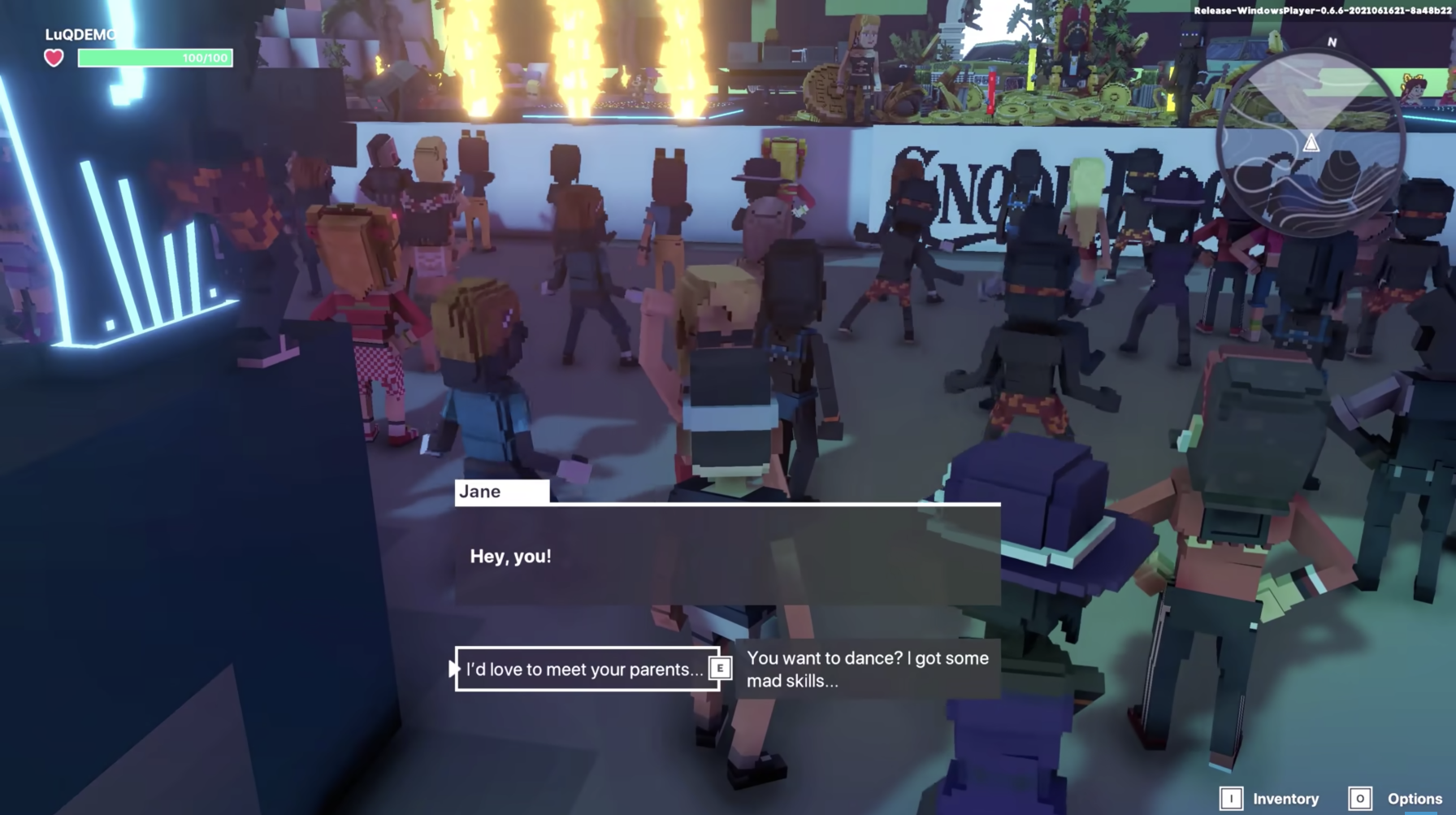
Initially built on the Ethereum blockchain, The Sandbox started migrating to the Polygon network to achieve faster transactions and reduce gas fees.
Owner: Animoca Brands
Launch date: 2021
Theme: voxel art
Platform: desktop (macOS, Windows), web
Metaverse users: 4.5 mln registered users
Pricing: free to explore; advanced experiences require SAND tokens and connection to your crypto wallet; transaction fees
Roblox
Roblox is a web2 metaverse geared primarily towards pre-teens, teens, and young adults. Unlike emerging metaverse games that are still under construction, such as Vault Hill, Roblox has been around for a while and gained even more traction during the COVID-19 pandemic.
Roblox is a platform that combines millions of games created by users and professional digital creators. It also serves as a social platform where users can make friends, chat with other players, and form group chats.
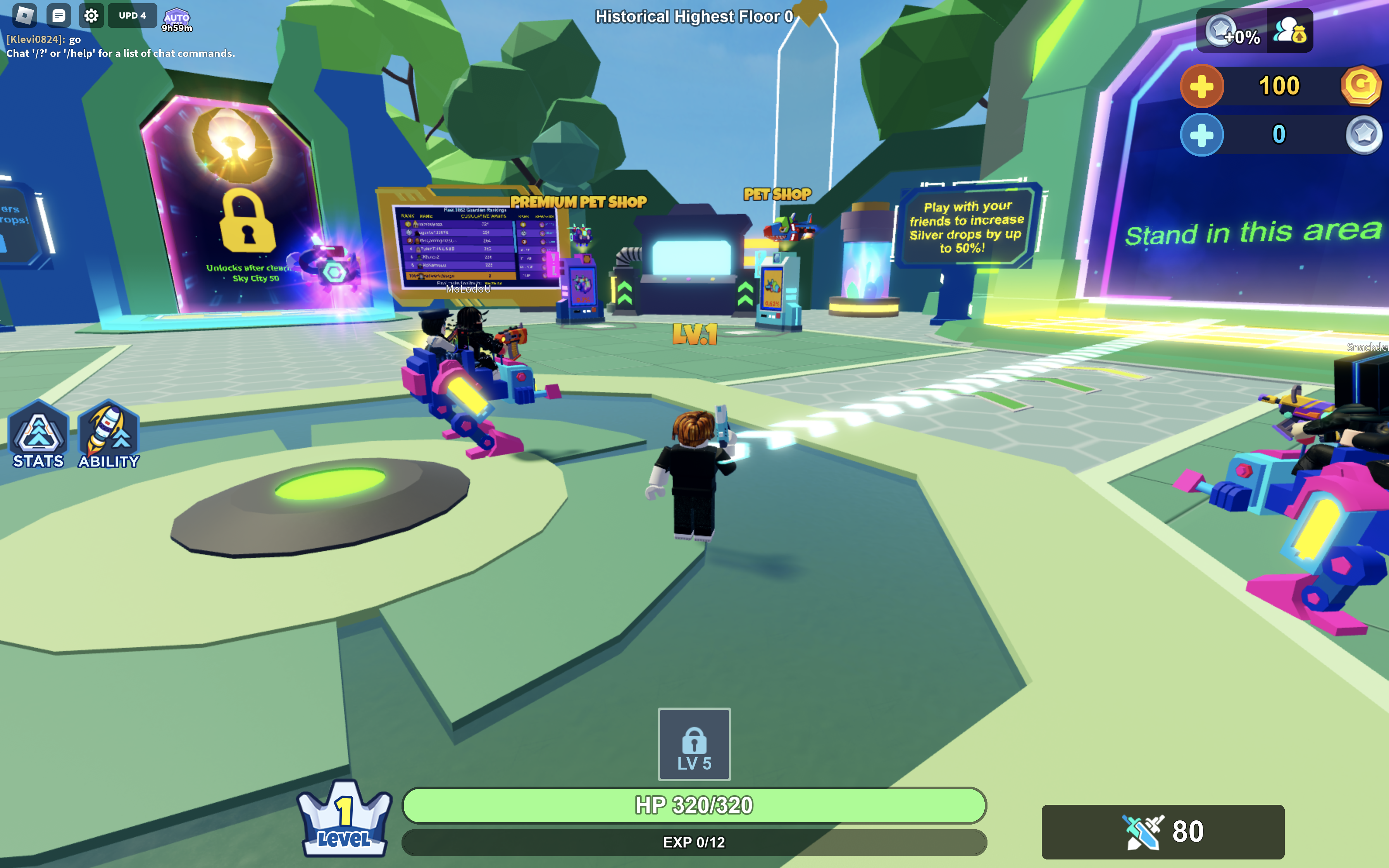
Roblox also provides monetization opportunities for artists and game designers. However, it has many rules for cashing out or selling items and takes generous commissions on each transaction.
Owner: Roblox Corporation
Launch date: 2006
Theme: voxel art
Platform: desktop (macOS, Windows), web, mobile (iOS, Android), Xbox
Metaverse users: 66.1 mln daily active users
Pricing: free to explore; advanced experiences require Robux in-game currency purchased for fiat money; transaction fees; Roblox Premium subscription
There are too many metaverse-like games to review in detail. Other examples include Minecraft, Fortnite, Axie Infinity, Chain of Alliance, and many others.
Marketing
Metaverse use cases are not limited to gamers looking for new kinds of entertainment or digital creators trying to make a living out of their 3D modeling and game design skills.
Big names across industries have rushed to establish their presence in the metaverse. And it’s not surprising. Metaverse platforms present innovative ways for brand promotion and community building, and it would be foolish not to seize such an opportunity.
Here is what marketers can do in the metaverse:
- Create a virtual store or an interactive space representing their brand
- Arrange product launch events with 3D product demos and virtual try-ons
- Create branded NFT accessories, wearables, or decorations and sell them or give away at events
- Host virtual events with freebies, mini-games, quizzes to engage with consumers in innovative ways
- Place ads on billboards, wall panels, lightboxes, stands, and other types of outdoor advertising within the virtual world
- Attend events hosted by others and interact with the audience
- Partner with popular metaverse influencers or grow their own virtual influencer
Since metaverse platforms allow users to create their own world, the space for creativity is huge. Plus, there are no strict ad policies like those imposed by Meta.
Let’s see what brands are leading the charge in metaverse marketing.
Fashion
Fashion plays a huge role in self-expression, an essential aspect of the metaverse. So, it explains why so many fashion brands are eager to step into the metaverse and experiment with it. Many companies reported great results already. Let’s review some metaverse applications in fashion.
Gucci
Gucci went all in and engaged with several metaverse and gaming platforms at once. In 2021, it partnered with Roblox and launched a two-week virtual event called Gucci Garden, where users could explore themed rooms, conveying the creative director’s vision. When visitors entered the rooms, their avatars turned into blank canvas mannequins, absorbing pieces of exhibitions as they traveled across the garden. The event attracted a whopping 19 mln attendees.
It was also possible to try on and purchase virtual Gucci items. Someone even bought a virtual Gucci bag for 350,000 Robux, which is about $4,115. And it’s not even an NFT.
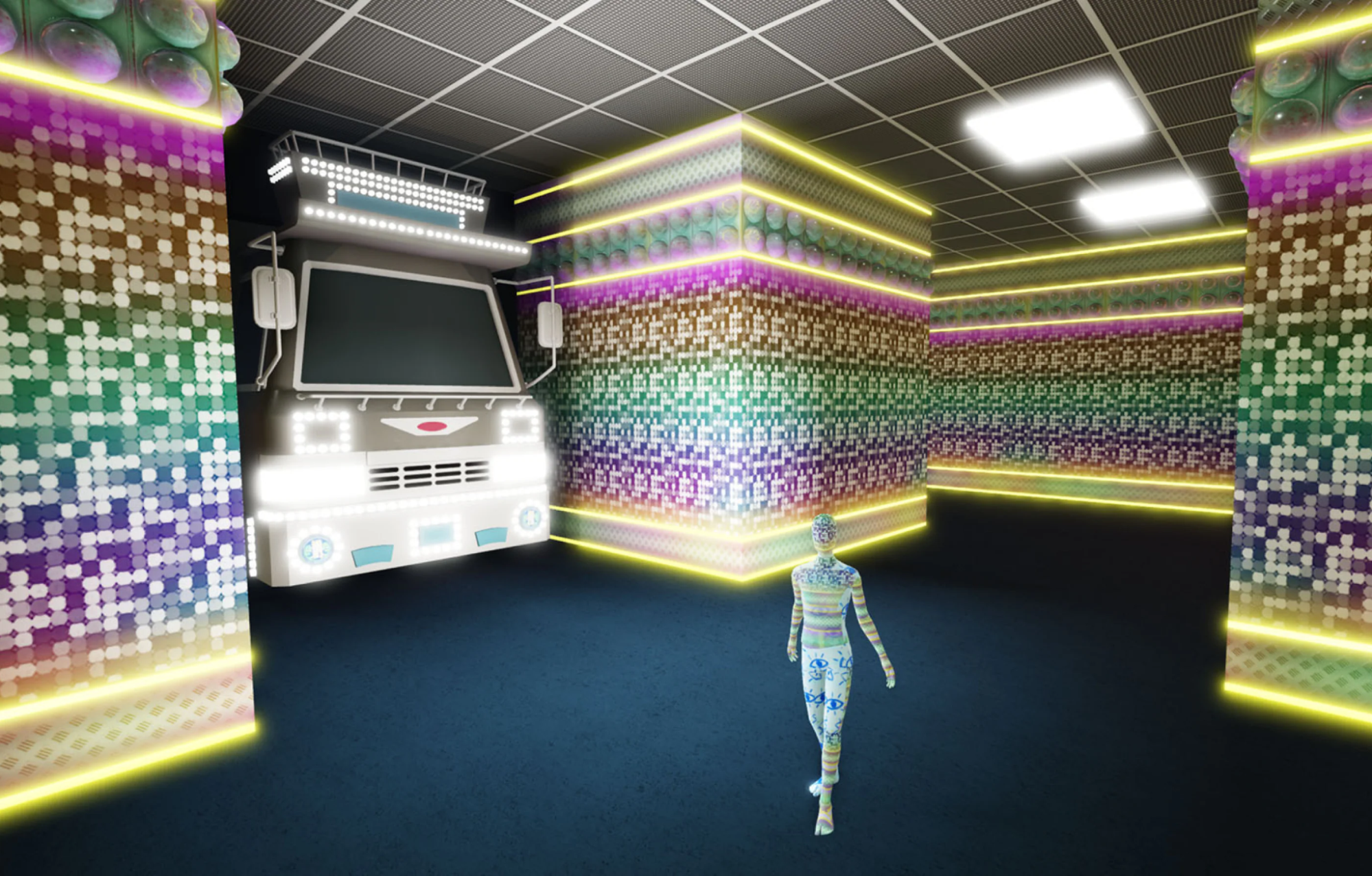
In 2022, Gucci created a permanent space in Roblox called Gucci Town. Visitors of Gucci Town can create art pieces, hang out with peers in a virtual cafe, view Gucci’s latest collections and exhibitions, and purchase collectibles.
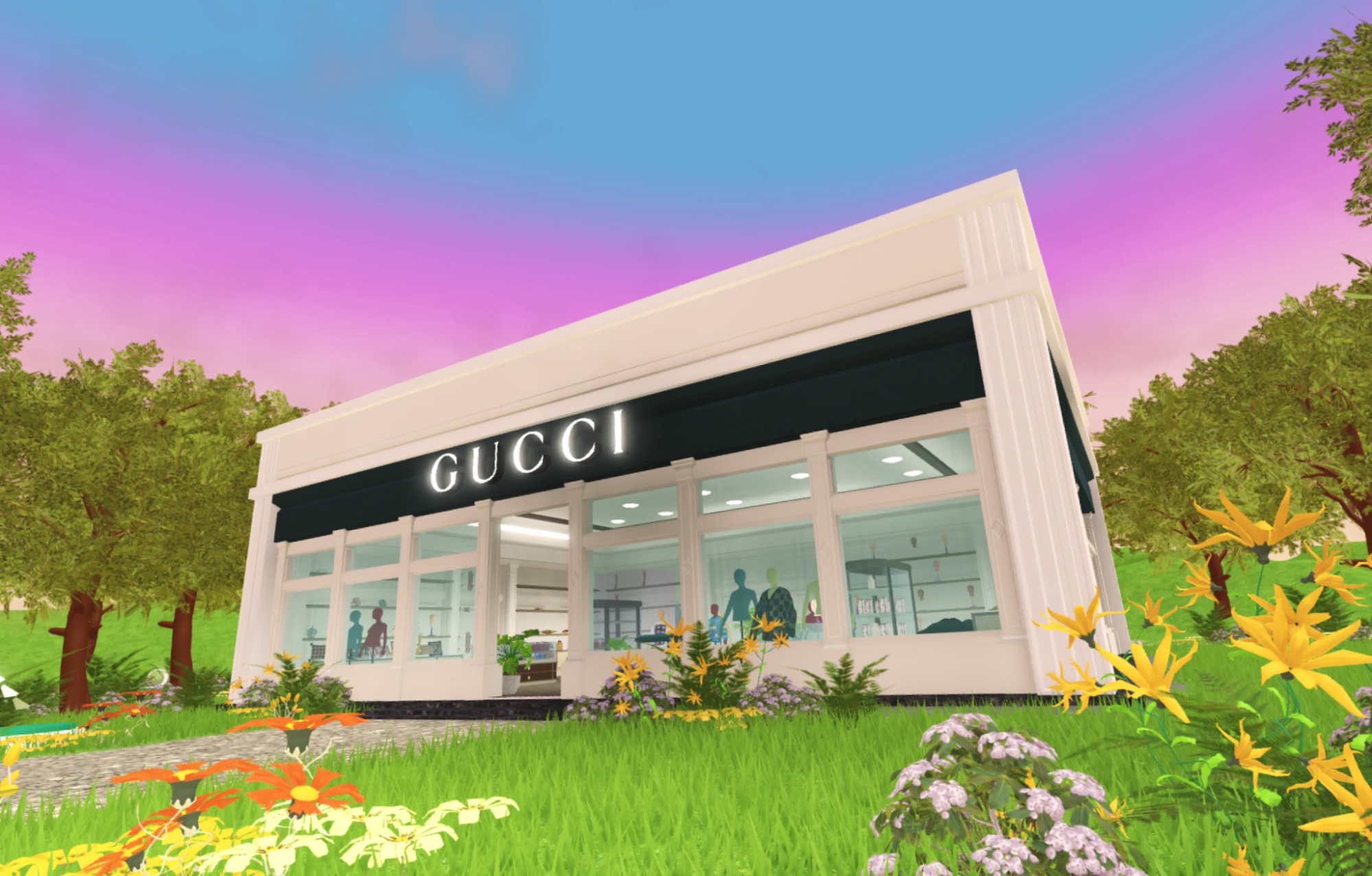
The same year, Gucci threw a two-week virtual event in The Sandbox – Gucci Vault. The players could complete quests to win SAND and digital collectibles.
Earlier, Gucci collaborated with Zepeto, a metaverse platform that allows users to interact with friends and strangers as 3D avatars in different virtual worlds. Zepeto users had a chance to explore the Gucci Villa space, wearing garments from Gucci’s latest collections.

Before the metaverse hype, Gucci partnered with traditional gaming providers like The Sims, Tennis Clash, and Pokémon GO!, as well as avatar creators like Genies.
Vans
Vans also partnered with Roblox and built a permanent presence there. They created Vans World, an interactive 3D space offering a skatepark experience. Vans World’s citizens can explore this massive skatepark inspired by real-world destinations, practice their insane skating tricks, and customize their Vans items and skateboards.
Players can also compete in challenges, earn free wearables, and of course purchase exclusive items.
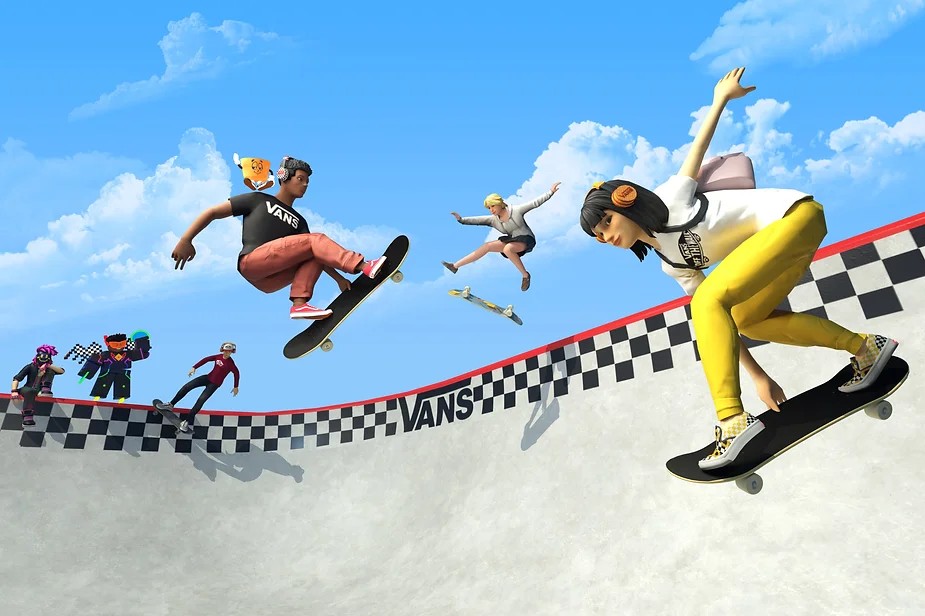
By 2023, Vans World reached over 100 mln visits. Vans also collaborated with other big names on the Roblox platform, such as Gucci, The North Face, and Stranger Things.
Adidas
Adidas is one of those brands that chose web3 metaverse platforms over web2 solutions like Roblox. In 2021, Adidas bought a parcel of land in The Sandbox. If you open The Sandbox Map, it is on the left from a giant plot purchased by Ubisoft.
It remains to be seen what experiences Adidas will create on its virtual land.

It remains to be seen what experiences Adidas will create on its virtual land.
But it’s not the only metaverse Adidas has invested in. In 2023, Adidas and 60 other fashion brands attended Metaverse Fashion Week hosted by Decentraland, showing off its NFT collection of digital apparel. Thanks to Decentraland’s linked wearables feature, those virtual clothing items are not only fancy NFTs but can be worn in Decentraland.
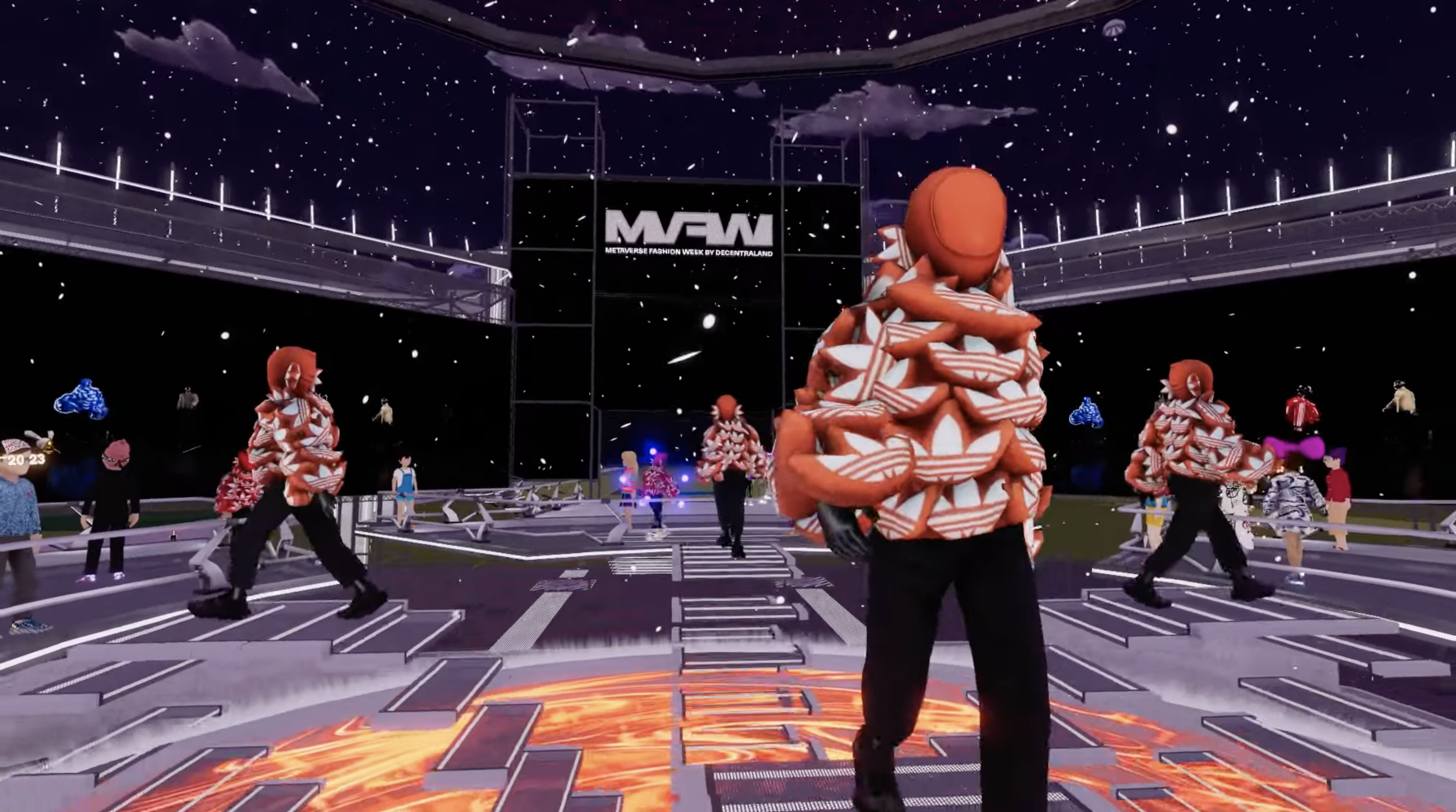
The four-day event gathered 26,000 visitors, significantly less than its first edition in 2022, which brought 108,000 unique attendees.
Many criticized the event for blurry visuals, glitches during avatar transitions, and troublesome navigation. If users wanted to buy something, they were redirected to the Decentraland marketplace, which was inconvenient and killed the immersive aspect of the experience.
“The music frequently cut out for no reason, meaning there would be no other sound effects other than the soft shuffling of my own dancing feet,”
That’s why it’s so important for metaverse brands to prioritize quality assurance and hire external experts who can look at your product from a different angle and have experience with emerging technologies and building immersive experiences.
Of course, these are just the first steps into the metaverse with the first mistakes and lessons learned. The more brands will experiment with hosting virtual events, the better experiences they will create for users.
Food industry
Major fast-food chains have jumped on the metaverse bandwagon and experimented with it in many ways. The first step is usually to release branded NFTs. The next step would be hosting a themed virtual event. And those who believe the metaverse is here to stay invest in building interactive experiences on different metaverse platforms. Let’s see what food and restaurant companies have been doing in the metaverse.
McDonald’s
McDonald’s entered the web3 space with the release of NFTs. In 2021, McDonald’s USA released its first NFT project celebrating the 40th anniversary of McRib. The same year, McDonald’s China gave away 188 NFTs from the Big Mac Rubik’s Cube collection to commemorate 31 years of operation in the Chinese market.
In August 2023, McDonald’s Singapore dropped 2000 non-tradable NFTs featuring its Grimace mascot in response to the Grimace Shake videos trending on TikTok.
As for immersive experiences, McDonald’s Hong Kong recently launched a metaverse game called McNuggets Land hosted by The Sandbox. The experience allows exploring the history of Chicken McNuggets and playing mini-games with real-world and blockchain-based rewards. For example, one could win coupons for 365 days of free Chicken McNuggets or 100K SAND.
Earlier this year, McDonald’s partnered with Karen X Cheng, a viral digital content creator, to arrange a Lunar New Year celebration in the metaverse. The attendees could choose a customizable 3D avatar and explore a themed virtual space combining traditional Asian influences and futuristic elements. The event is hosted on the Spatial VR platform and available through any connected device.
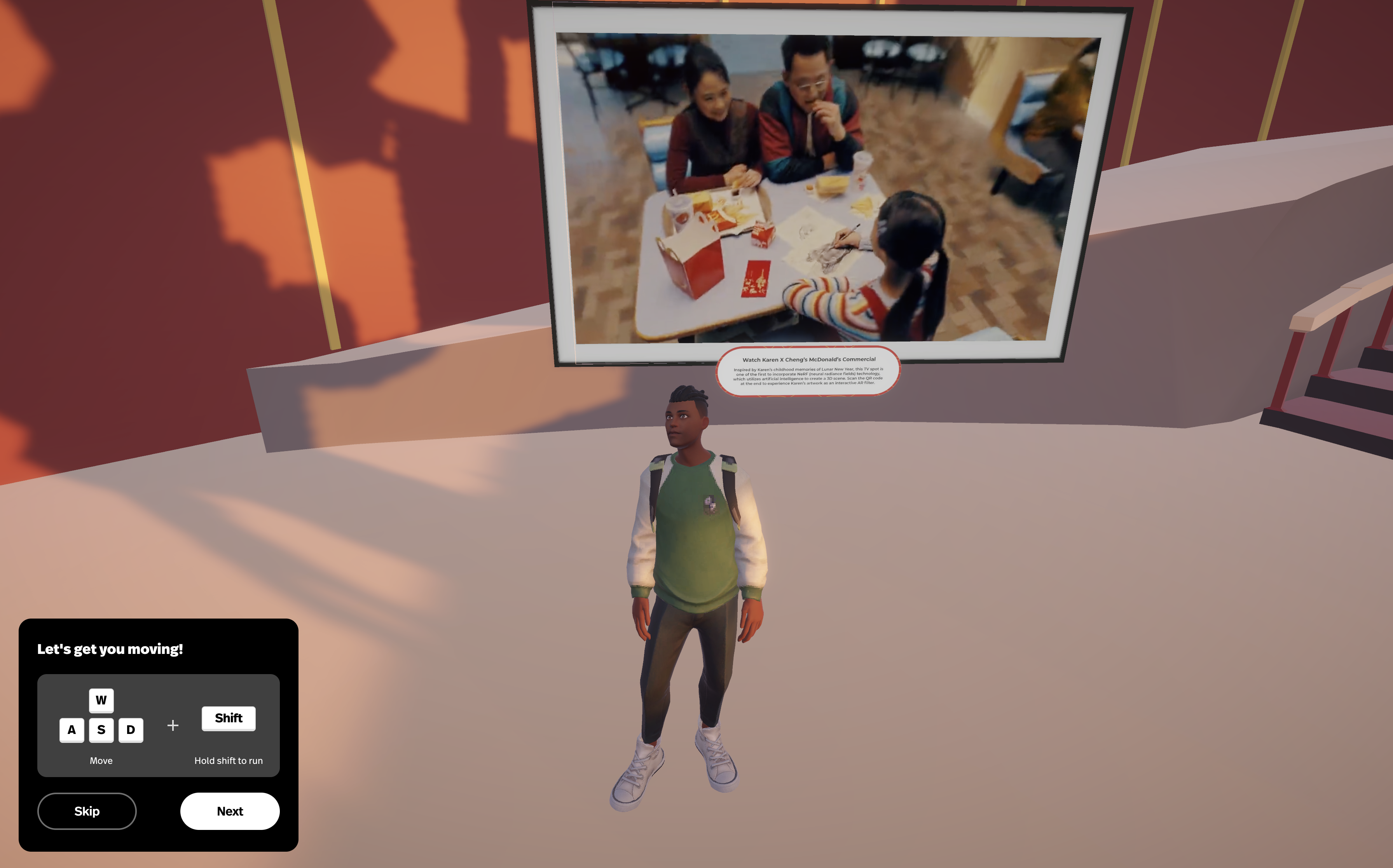
McDonald’s also filed 10 trademarks to operate as a virtual restaurant. One of them is interpreted as “operating a virtual restaurant online featuring home delivery,” so in the future, we’ll probably be able to place online orders right from metaverse platforms.
Starbucks
Unlike McDonald’s, Chipotle, Wendy’s, and several other restaurant chains that opted for ready-made solutions to build their metaverse presence, Starbucks invested in custom software development of their own platform.
In 2022, Starbucks launched Starbucks Odyssey, a web3 platform with games and activities for Starbucks fans. It serves as an extension of its rewards program and allows members to earn or purchase NFTs, opening up new benefits. The rewards range from virtual cocktail-making classes, unique merchandise and artist collaborations, and 30 days of free coffee to exclusive events at Starbucks Reserve Roasteries or a trip to a Starbucks coffee farm in Costa Rica.
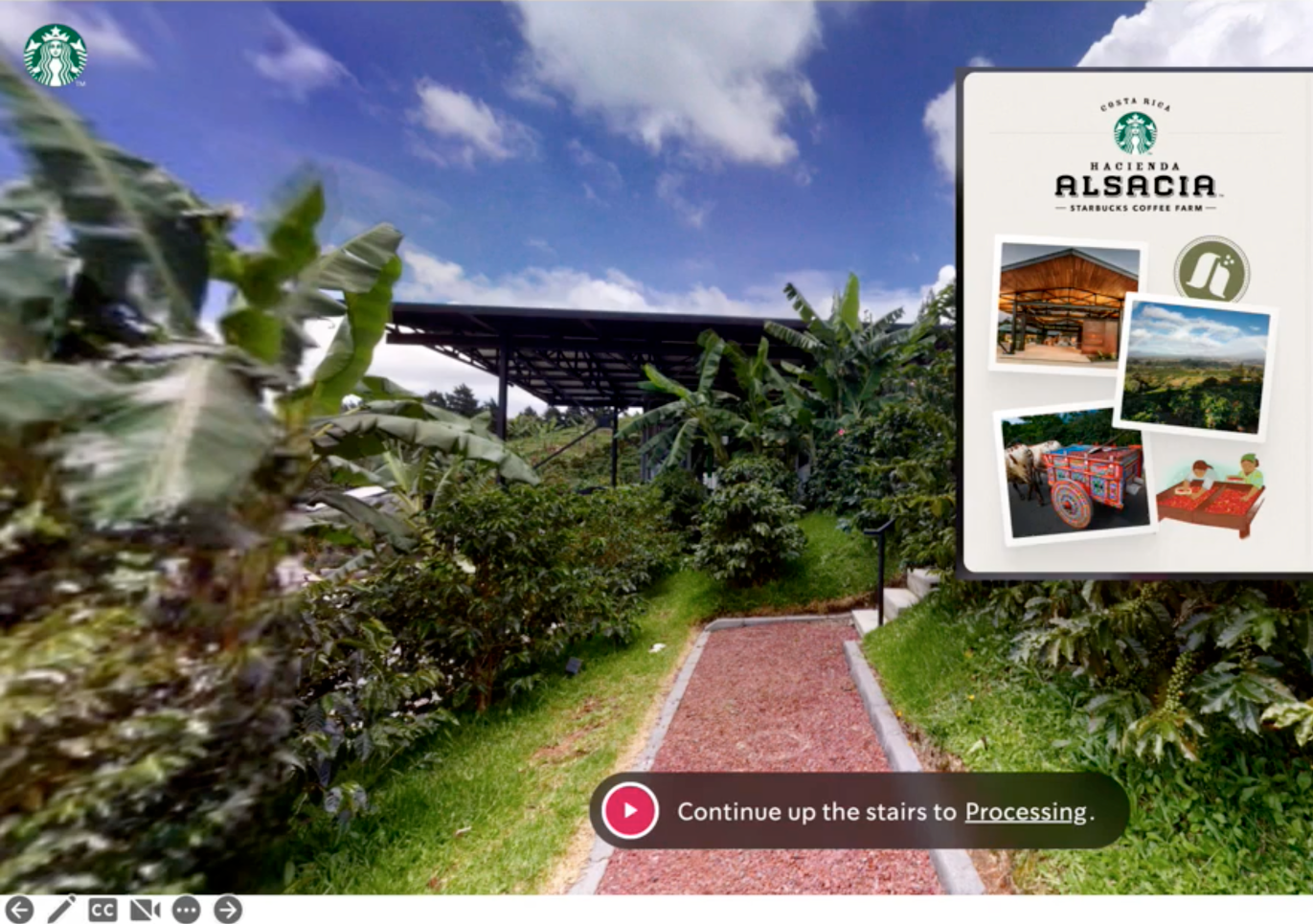
Starbucks Odyssey is a beta version, so it’s available only for a small number of waitlist users.
Chipotle
In 2021, Chipotle surprised fans with a Halloween-themed metaverse experience on Roblox called Chipotle Boorito Maze. Chipotle offered coupons for free burritos for the first 30K players each day to incentivize players. The event lasted four days.
Before exploring Chipotle Boorito Maze, the players could choose a free costume and trick-or-treat at the register to claim their code for a free burrito. The goal of the experience was to get to the center of the maze and grab some exclusive items for their avatars, picking up ingredients to gain superpowers and avoid spooky creatures along the way.
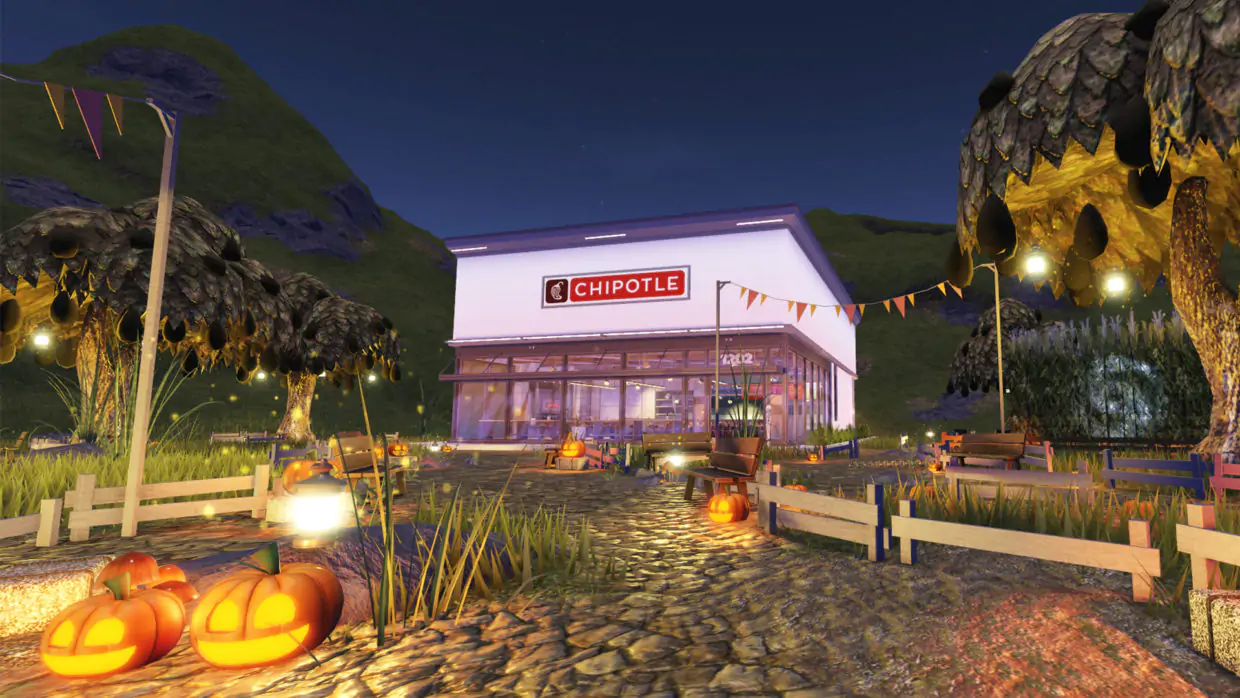
Another Roblox experience was delivered on National Burrito Day in 2022. Chipotle launched a Burrito Builder that challenged users to roll virtual burritos and earn in-game currency that can be exchanged for real-life rewards like a burrito or other entrée.
More than 4 million users tried out the Burrito Builder during the first week, and more than 17 million have played it since then.
Events & Entertainment
The event industry is already accustomed to throwing virtual events because of COVID-19 and the remote culture it brought. However, with the rise of metaverse-as-a-service platforms, it is now possible to organize much more lively and entertaining virtual events. Let’s review some ready-made metaverse platforms suitable for the event industry.
Yahaha
Yahaha is a metaverse company that provides a low-code platform for building metaverse experiences. It was established in 2020 and is free to use.
On Yahaha, you can create a 3D avatar and play games created by others or develop your own game with Yahaha Studio. The editor offers over 1 mln assets, built-in physics, and an option to import your own 3D models. Spatial audio, direct messaging, friend networking, voice/text chats, and live streams are also included.
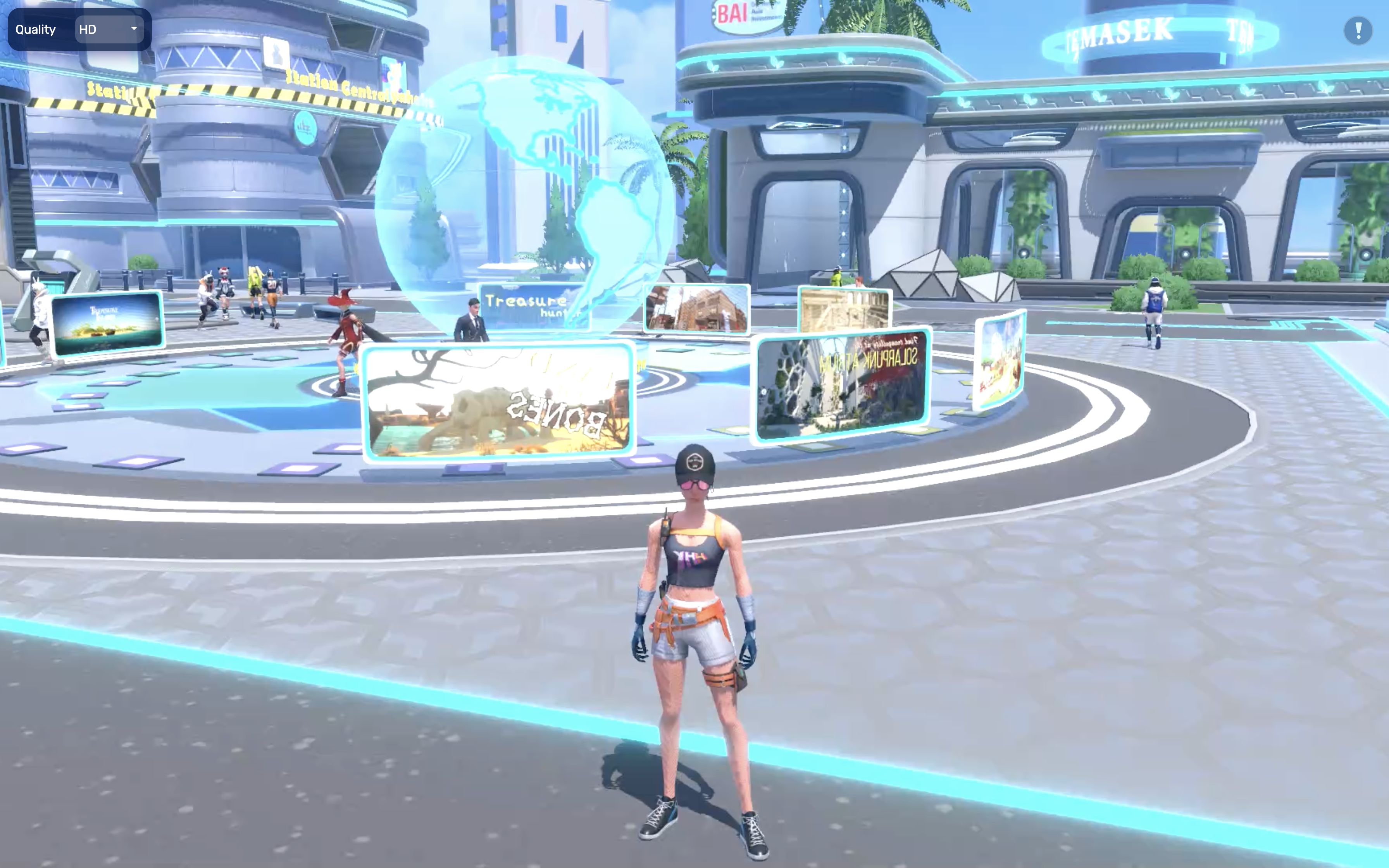
Yahaha has about 100K creators and hundreds of thousands of players. It could be a space for hosting live concerts, fashion shows, art exhibitions, or team buildings.
Rooom
Rooom is an all-in-one solution for creating 3D, AR, and virtual reality experiences. It offers a web-based metaverse CMS with customizable space templates, virtual showrooms with payment integrations, spatial audio, text chats, and video calls.
Rooom allows users to choose from a broad range of avatar types, be it robots, cartoon characters, or abstract people. One can also upload their photo and turn that into a 3D avatar with customizable hairstyles and outfits.
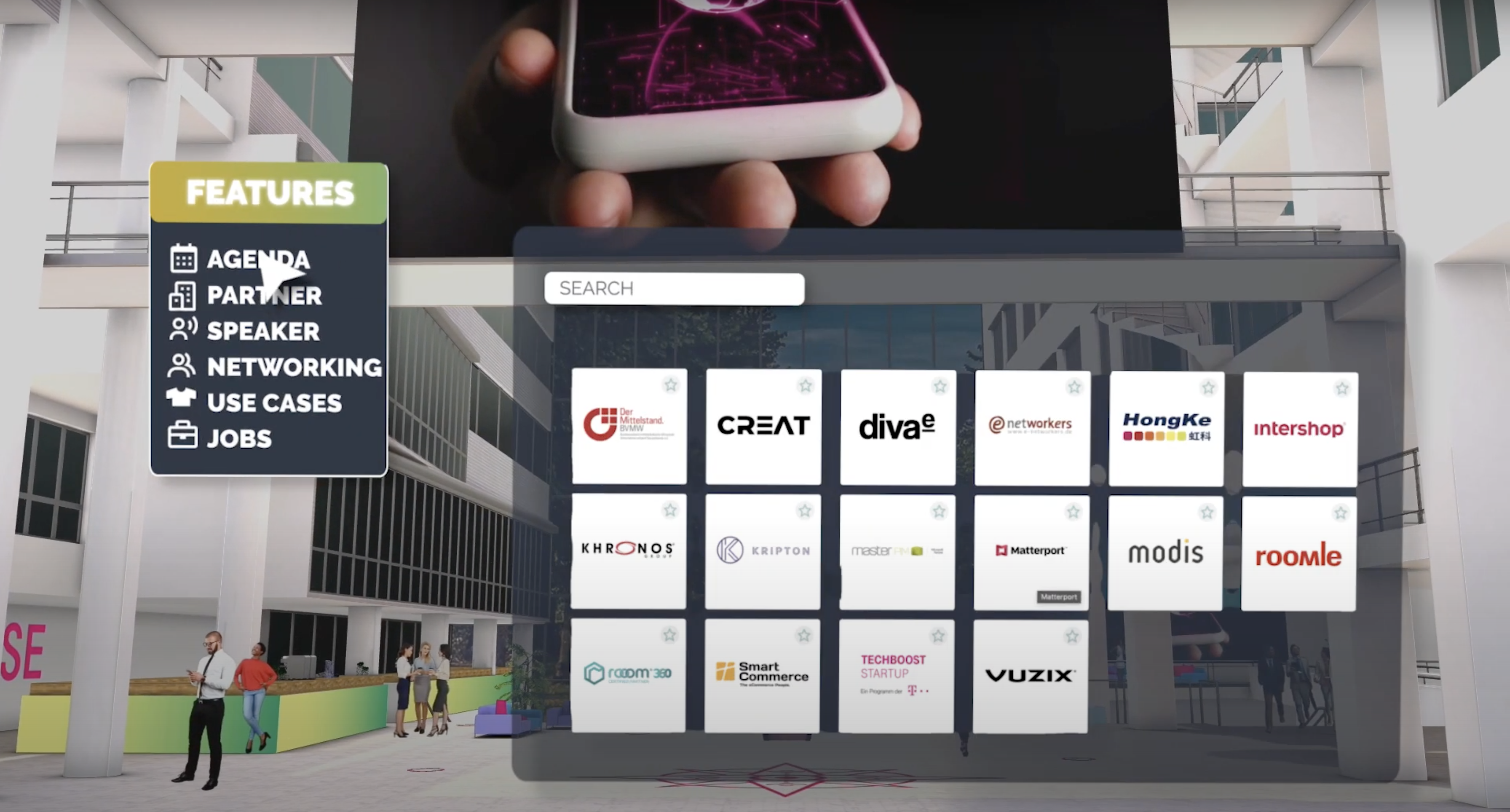
The platform also enables NFT integrations. For example, businesses can use NFTs as access authorization for high-profile events or as proof of authenticity for digital art. Non-techies can use Rooom’s Web3 Creator Studio to create NFTs with multichain support.
Rooom has built-in collaboration and engagement features to make online conferences, workshops, music festivals, and job fairs a truly memorable experience. Rooom has a free plan with limited features and a white-label option for enterprises.
Spatial
Spatial is a metaverse platform that allows building eye-pooping, interactive 3D spaces that can be instantly shared to web, iOS, Android, and Meta Quest.
Spatial has Creator Toolkit that allows you to develop gamified experiences without coding skills. Importing your own 3D assets is also possible. On Spatial, one can build a world with several spaces operating simultaneously, add quests and rewards, and monetize their content.

Spatial has been around since 2016, and their platform has been used by famous brands like Tommy Hilfiger, Runway Magazine, Vogue Singapore, BOSS, among others.
Laurent Leoncini, a famous director and photographer, Federico Clapis, a well-known Italian artist, and other creators built their virtual art galleries on Spatial. But the use cases are wider than fashion shows and art exhibitions. A movie premiere, a podcast, a brainstorming session, a panel discussion, an album launch party, a branded event – all these can be hosted on Spatial.
Spatial has a freemium option for up to 50 participants and two more plans, including up to 500 participants, advanced analytics, live language translations, branding, and tech support.
Simulation Training
Simulation training is very close to the metaverse concept because it can happen virtually. More so, online solutions for simulation training are built with game engines, so they usually have gamelike mechanics.
Simulation training is essential in many industries, such as healthcare, emergency services, mechanical engineering, aviation, defense, and construction. Let’s see what companies provide simulation training opportunities in the metaverse.
Veyond Metaverse
Veyond Metaverse is a healthcare technology startup established in 2021. They created Veyond Connect™, an advanced XR communication platform for medical applications.
Veyond Connect™ combines AI, machine learning, augmented reality, dynamic digital twin, and haptic feedback technologies to enable quality surgical training. The platform can also be used for live telemedicine consultations and remote collaboration between physicians.
Veyond Metaverse hopes their solution will help people in isolated and remote areas gain better access to safe surgical care. The platform allows a top-tier surgeon, a proctor, to oversee an operation performed by a less experienced surgeon in a different location.
With Veyond Connect™, the proctor sees the patient and the surgical tools replicated with digital twin technology. In turn, the operator sees instructions from the proctor in their field of view with the help of AR technology. This way, two surgeons can collaborate in real time without the need to travel long distances.

The first actual operation conducted with the help of Veyond Connect™ is scheduled for September 2023. The surgery will be performed on a patient in Myanmar and proctored by an expert in Paris.
Siemens Simulation Collaboration Platform
Simulation Collaboration Platform is a research project of Siemens that provides a solution for an industrial metaverse. It leverages digital twin technology for collaborative design and simulation training.
Simulation Collaboration Platform could be used for testing the noise level of a machine thanks to acoustic simulation. For example, we have three experts on a team, all in different locations. But with the help of an industrial metaverse platform and some VR headsets, they can have the same acoustic impression they would have experienced in real life.
Another application is experimenting with an asset’s interior or exterior design, such as changing the colors, materials, placement of the elements, etc. For instance, at a transportation trade fair in 2022, the attendees could collaboratively redesign the interior of a virtual train.
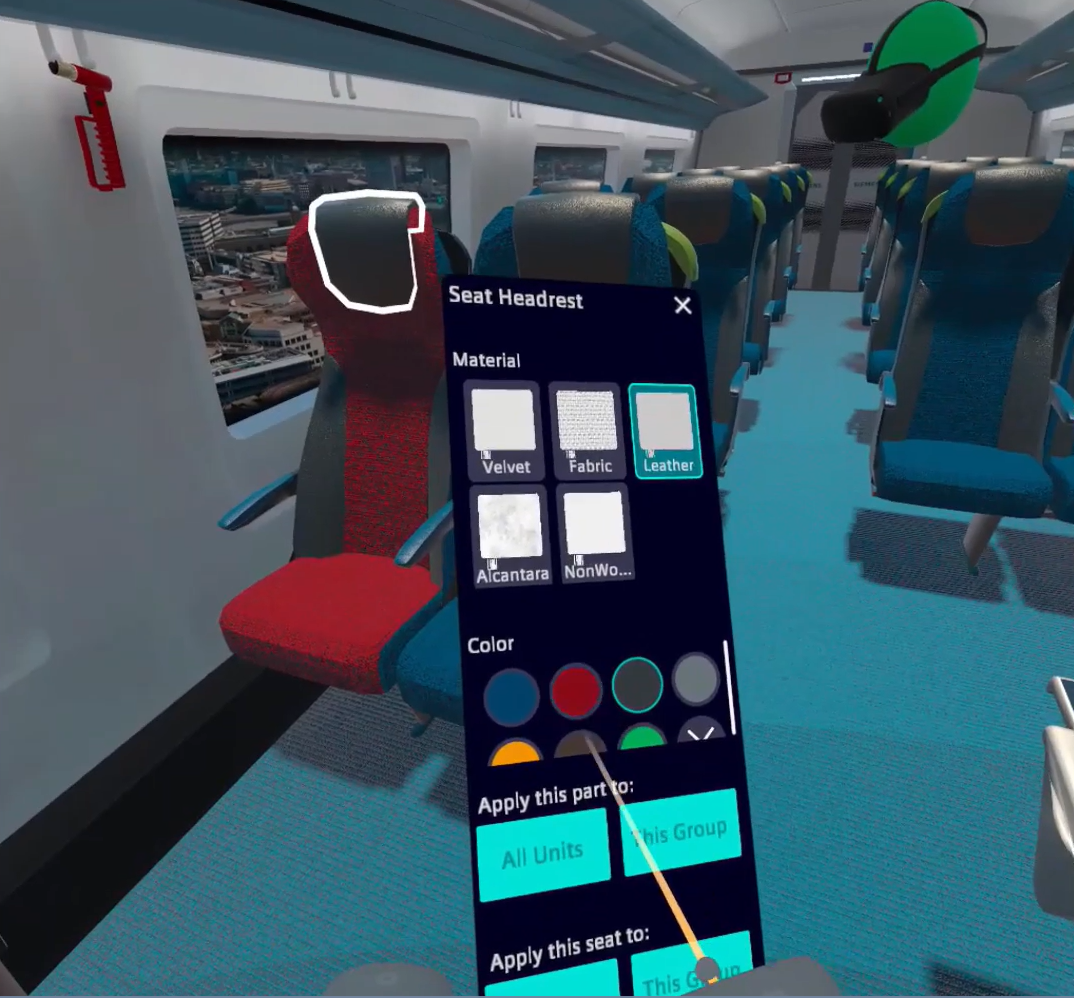
The simulations are based on the Simcenter 3D software, and Siemens continues working on expanding its industrial use cases.
Nvidia Omniverse
Nvidia Omniverse is a cloud platform for developing, deploying, and managing commercial and industrial metaverse solutions. The platform simplifies the development of physically accurate digital twins and large-scale simulations.
Nvidia Omniverse uses Pixar’s Open USD (Universal Scene Descriptor) framework, which has become an industry standard in visual effects, robotics, manufacturing, and design. It also allows connecting apps like Maya, Blender, Substance 3D Painter, Unreal Engine, Move.ai, and Nextspace to make edits in your favorite tools and instantly see them reflected in the Omniverse platform without the need to export and import assets back and forth.
Nvidia Omniverse has already been used by world-known companies across several industries. For example, BMW Group used Omniverse to build an accurate digital replica of an EV plant opening in 2025. This allows factory planners to experiment with process optimization at no cost and collaborate with teammates from other plants.
Another example is PepsiCo – they capitalized on Nvidia Omniverse and Metropolis to simulate and optimize their distribution centers. As a result, they could test variations in layout and optimize workflows to accelerate throughput before proceeding with physical changes and investments.
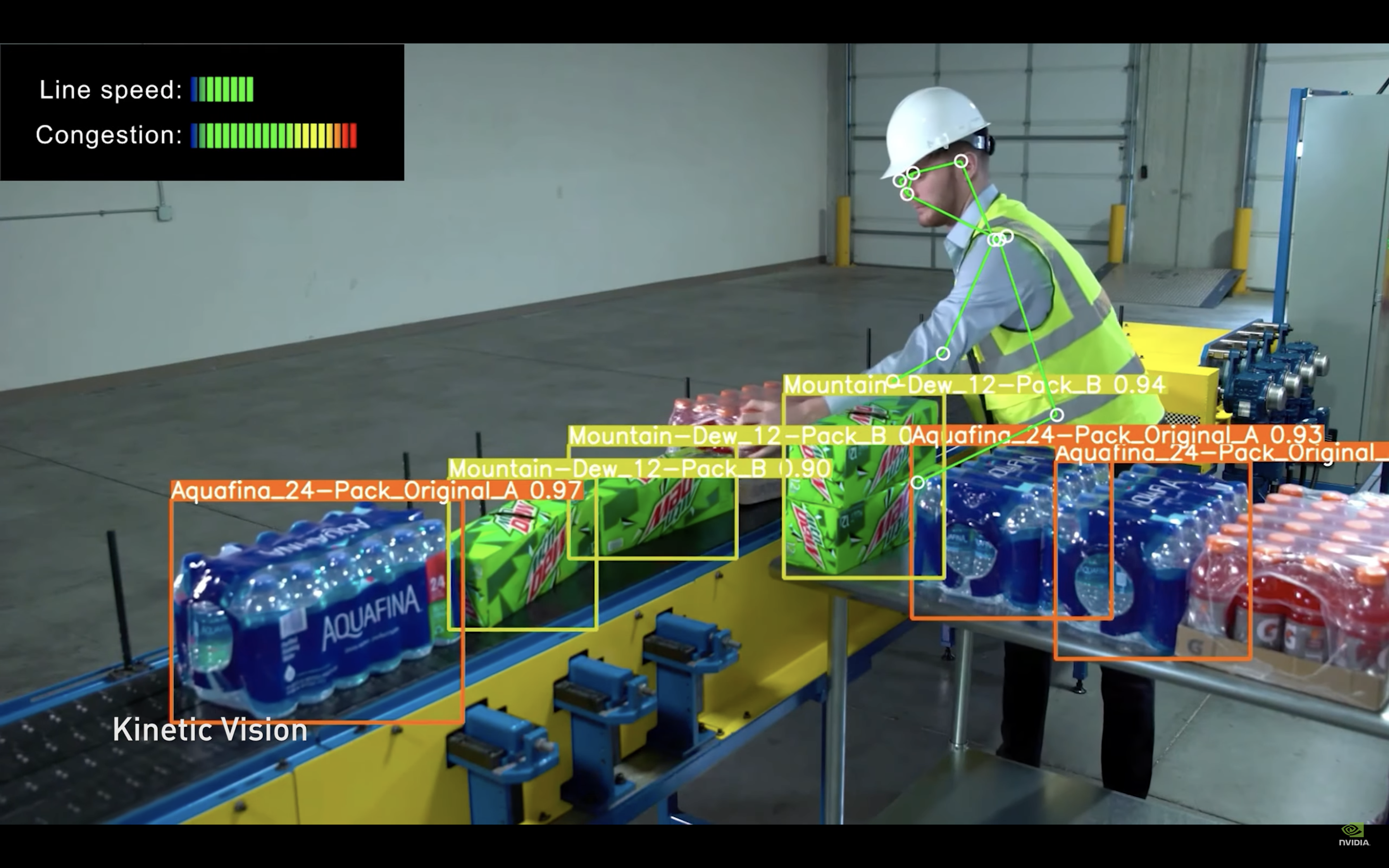
Amazon relied on Omniverse to build digital twins of their warehouses. These virtual replicas help them optimize warehouse design, train more intelligent robot assistants, and improve operational efficiency.
Ericsson, Telco, Lowe’s, and even Germany’s national railway operator have all turned to Nvidia Omniverse to create digital twins of their enterprise assets.
How to start your metaverse project
How to get started with the metaverse? The first step is to ensure there’s an actual use case for your particular business. Ask yourself these questions:
- What problems could a metaverse platform solve?
- Does my target audience spend time in the metaverse?
- Do I necessarily need a custom-built solution, or could I leverage an off-the-shelf service?
Once you’ve identified the use cases, you need to articulate clear-cut business requirements and turn them into functional specs for developers and designers. If you lack expertise in the emerging tech domain, hiring a vendor who knows potential pitfalls and can select an optimal tech stack is best. The latter is vital to ensure the software solution is cost-effective, scalable, and easy to maintain and upgrade.
We at Redwerk have 18+ years of experience in web2 and web3 development and can help you choose the tech stack best suited for your business. We are the author of BAMM, layer 3 transport protocol for building decentralized, privacy-friendly apps, and have a solid track record in game development and testing.
Start small, build a prototype, and proceed with customer development. Once you have enough feedback from potential users, you can continue MVP development. Our BAs will work with you closely and study your niche and associated challenges to create a detailed product roadmap with a breakdown of must- and nice-to-have features, technologies, and risks to consider.
Perhaps you’ve already started building something, but you’re not happy with your progress or the product’s quality. With Redwerk’s fully managed teams, you could alleviate the workload burden and look at your product from a different angle. Here is a brief overview of the services you could delegate to us:
- Creating, detailing, and improving functional specs
- 3D asset creation and animation
- Smart contracts development and testing
- Blockchain-based development
- Integrating payment systems, crypto wallets, DeFi apps, analytics tools
- Developing a subscription module
- Building a monetization module for content creators
- Testing server performance and suggesting ways to optimize it
- Performing code review that includes a brief security audit
This is not an exhaustive list, so please reach out and share your needs so we can help you kickstart your metaverse project. We’ve built many web2 and web3 solutions from the ground up, so it’s easy for us to get involved at any stage of the software development cycle. And we work with non-techies, too!
Summing Up
The metaverse is here to stay, in one form or another. What we are observing now are just early steps. Yes, we’ve seen metaverse games with questionable in-game economies, virtual events with blurry avatars and terrible sound issues, and downright dull fashion shows. But we’ve also seen companies who do it right, who understand that delivering a quality experience takes a consolidated effort of multiple experts, time, and ongoing QA workflows in place.
